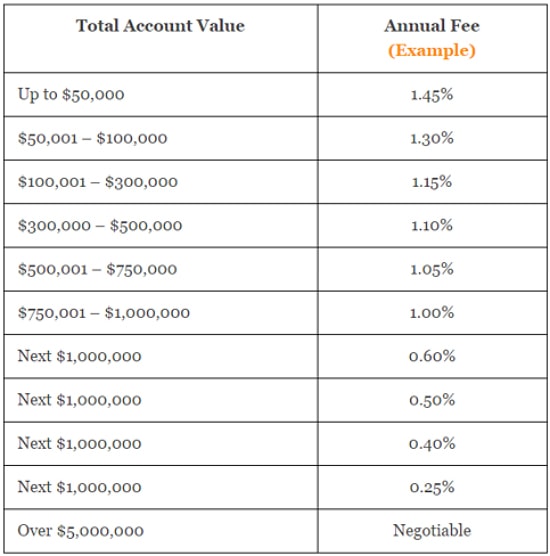
What is a typical work day for a financial professional? The day starts with Prospecting, then moves into Client relationship building, and finally, Continuing education. While there are many more parts to a financial advisor's day, these are the core parts. These parts will all be covered in this article. Marketing and continuing education are also topics that need to be discussed. Hopefully you'll learn something from this article that will help you better manage your money.
Prospecting
Many advisors dream of generating referral leads. It is true that the top 1% does a lot more prospecting than most advisors. Those who have a warm market, however, may focus on sponsoring events and creating a website for their practice. Prospecting is a great way to get new advisors started. This includes writing blogs and establishing strong digital presence.
If you are a novice financial advisor, most of your day will be spent developing a network of referrals and meeting prospects in person. A more seasoned advisor will likely focus on sponsoring corporate events and attending networking events to generate new business. Whatever method you use, remember that your goal should be to meet with a prospect. Prospecting can be difficult. It's not an easy task once you learn the ropes. Prospects will be excited to meet with you.

Establishing client relationships
Honest communication is an important part of client relations building. Clients should feel comfortable talking to advisors about any financial issues. Trust is built when clients are honest and open about their financial problems. It doesn't matter if a client has never been to financial planning before or how experienced they are, it is important to be open and transparent when discussing their future goals and plans. A positive client experience is the basis of a strong, lasting relationship.
Financial advisors can be busy with legal documents, spreadsheets and paperwork. However, maintaining client relationships is their most important task. Trust is essential to a business's success. Consumers can trust the products or services they purchase at the supermarket. However, clients have to trust financial advisors who will provide their financial information. In a nutshell, financial advisors must earn their clients' trust, which translates into higher client growth.
Continuing education
Continuing Education for Financial Advisors(CEFA) has become a critical component of the success of financial advisers. The financial industry is always changing, so continuing education is essential. The business model of financial advisors is affected by a variety of factors, including industry trends, regulations, and changing demographics. In addition, today's financial advisors need to have up-to-date knowledge of new products and their place in the constellation.
A recent survey conducted by the Centre for Life Insurance and Financial Education of more than 5,000 financial advisers in six provinces revealed a surprising fact: nearly 30% of respondents did not realize that sales training was not eligible for CE credit. According to the survey, provincial regulators do not consider sales training CE for financial advisors. Continuing education for Financial Advisors is a key part of keeping your license current and maintaining your knowledge in the field.

Marketing
A marketing day in the life of a financial adviser involves many activities. It could involve setting up a website and marketing your services through email. Marketing requires planning. You should take the time to find the right approach for you business. A marketing day in the life of a financial advisor will not only help you attract new clients, but it will also help you expand your business.
Clear goals will help you stay on the right track and reach your goals. The first goal could be to get a business license. Next, you might want to land your first client. As your business grows, it is important to set higher goals such as acquiring 10 clients per year or achieving a specific level of commission. Clear goals will allow you and your team to understand your business's direction. Here are some ways to make your marketing day successful.
FAQ
What are some of the different types of investments that can be used to build wealth?
There are several different kinds of investments available to build wealth. Here are some examples.
-
Stocks & Bonds
-
Mutual Funds
-
Real Estate
-
Gold
-
Other Assets
Each of these options has its strengths and weaknesses. Stocks or bonds are relatively easy to understand and control. However, stocks and bonds can fluctuate in value and require active management. Real estate, on the other hand tends to retain its value better that other assets like gold or mutual funds.
It's all about finding the right thing for you. Before you can choose the right type of investment, it is essential to assess your risk tolerance and income needs.
Once you have determined the type of asset you would prefer to invest, you can start talking to a wealth manager and financial planner about selecting the best one.
What are the most effective strategies to increase wealth?
It is essential to create an environment that allows you to succeed. It's not a good idea to be forced to find the money. If you're not careful you'll end up spending all your time looking for money, instead of building wealth.
It is also important to avoid going into debt. Although it is tempting to borrow money you should repay what you owe as soon possible.
You set yourself up for failure by not having enough money to cover your living costs. And when you fail, there won't be anything left over to save for retirement.
Therefore, it is essential that you are able to afford enough money to live comfortably before you start accumulating money.
What is retirement planning exactly?
Retirement planning is an essential part of financial planning. It helps you prepare for the future by creating a plan that allows you to live comfortably during retirement.
Planning for retirement involves considering all options, including saving money, investing in stocks, bonds, life insurance, and tax-advantaged accounts.
Statistics
- A recent survey of financial advisors finds the median advisory fee (up to $1 million AUM) is just around 1%.1 (investopedia.com)
- These rates generally reside somewhere around 1% of AUM annually, though rates usually drop as you invest more with the firm. (yahoo.com)
- According to a 2017 study, the average rate of return for real estate over a roughly 150-year period was around eight percent. (fortunebuilders.com)
- If you are working with a private firm owned by an advisor, any advisory fees (generally around 1%) would go to the advisor. (nerdwallet.com)
External Links
How To
How to Invest Your Savings to Make Money
Investing your savings into different types of investments such as stock market, mutual funds, bonds, real estate, commodities, gold, and other assets gives you an opportunity to generate returns on your capital. This is called investing. It is important that you understand that investing doesn't guarantee a profit. However, it can increase your chances of earning profits. There are many different ways to invest savings. One of these options is buying stocks, Mutual Funds, Gold, Commodities, Real Estate, Bonds, Stocks, ETFs, Gold, Commodities, Real Estate, Bonds, Stocks, Real Estate, Bonds, and ETFs. These methods are described below:
Stock Market
Because you can buy shares of companies that offer products or services similar to your own, the stock market is a popular way to invest your savings. You can also diversify your portfolio and protect yourself against financial loss by buying stocks. If oil prices drop dramatically, for example, you can either sell your shares or buy shares in another company.
Mutual Fund
A mutual fund can be described as a pool of money that is invested in securities by many individuals or institutions. They are professional managed pools of equity or debt securities, or hybrid securities. The mutual fund's investment objective is usually decided by its board.
Gold
It has been proven to hold its value for long periods of time and can be used as a safety haven in times of economic uncertainty. It can also be used in certain countries as a currency. In recent years, gold prices have risen significantly due to increased demand from investors seeking shelter from inflation. The supply and demand factors determine how much gold is worth.
Real Estate
Real estate refers to land and buildings. If you buy real property, you are the owner of the property as well as all rights. Rent out a portion your house to make additional income. You could use your home as collateral in a loan application. You may even use the home to secure tax benefits. Before buying any type property, it is important to consider the following things: location, condition and age.
Commodity
Commodities include raw materials like grains, metals, and agricultural commodities. As commodities increase in value, commodity-related investment opportunities also become more attractive. Investors who want the opportunity to profit from this trend should learn how to analyze charts, graphs, identify trends, determine the best entry points for their portfolios, and to interpret charts and graphs.
Bonds
BONDS ARE LOANS between governments and corporations. A bond can be described as a loan where one or both of the parties agrees to repay the principal at a particular date in return for interest payments. Bond prices move up when interest rates go down and vice versa. A bond is bought by an investor to earn interest and wait for the borrower's repayment of the principal.
Stocks
STOCKS INVOLVE SHARES in a corporation. Shares represent a fractional portion of ownership in a business. Shareholders are those who own 100 shares of XYZ Corp. When the company is profitable, you will also be entitled to dividends. Dividends are cash distributions to shareholders.
ETFs
An Exchange Traded Fund, also known as an ETF, is a security that tracks a specific index of stocks and bonds, currencies or commodities. ETFs can trade on public exchanges just like stock, unlike traditional mutual funds. The iShares Core S&P 500 eTF (NYSEARCA – SPY), for example, tracks the performance Standard & Poor’s 500 Index. Your portfolio will automatically reflect the performance S&P 500 if SPY shares are purchased.
Venture Capital
Venture capital is private financing venture capitalists provide entrepreneurs to help them start new businesses. Venture capitalists provide financing to startups with little or no revenue and a high risk of failure. Venture capitalists invest in startups at the early stages of their development, which is often when they are just starting to make a profit.